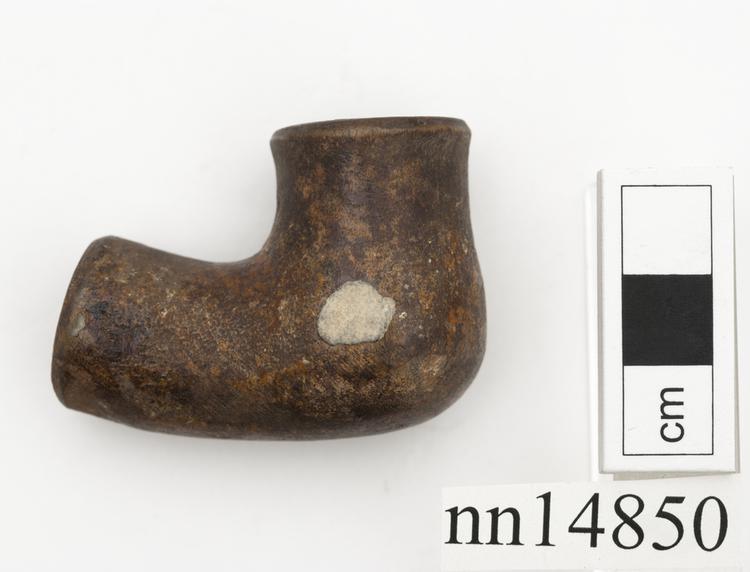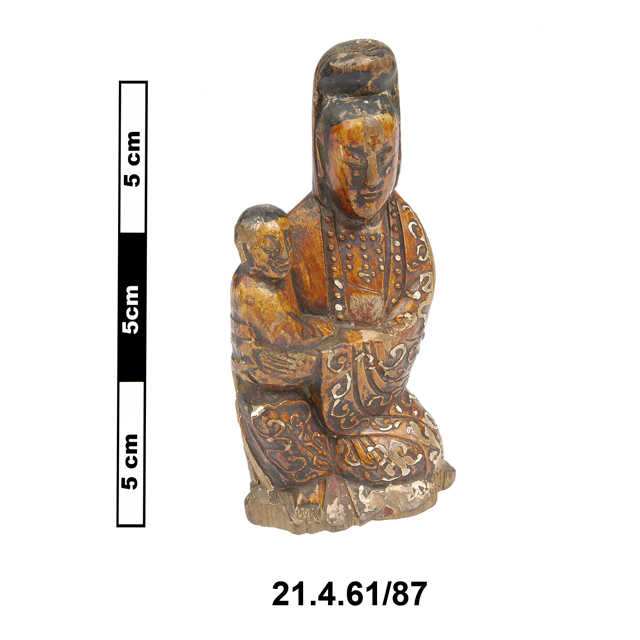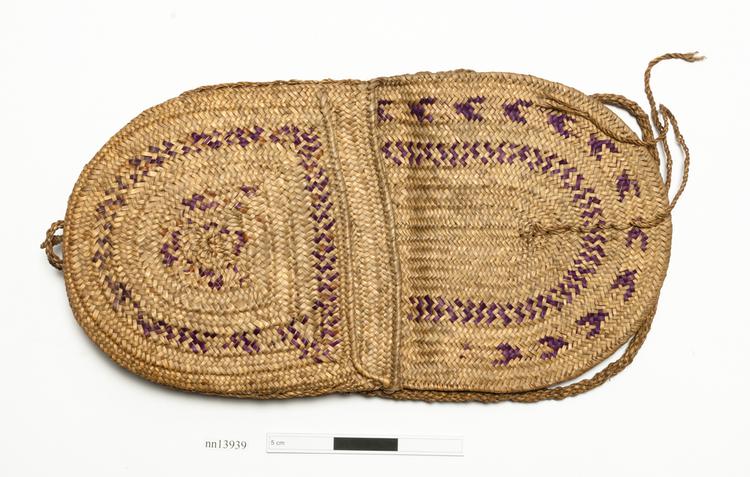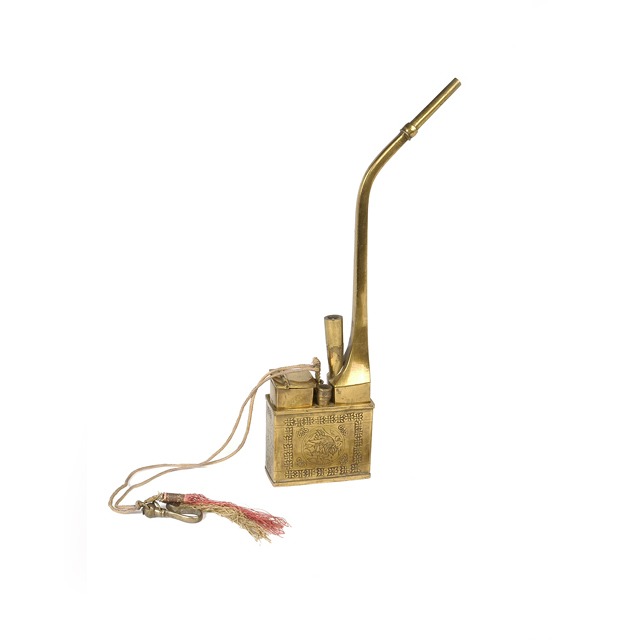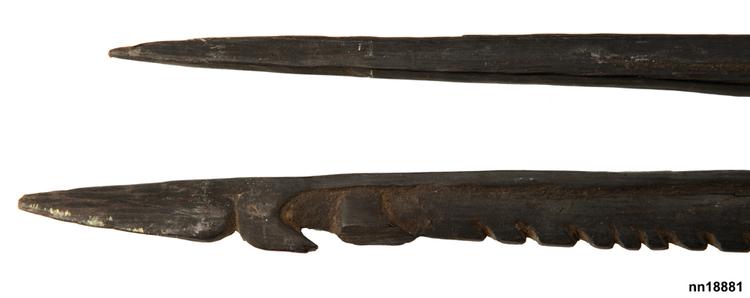
Dark hard wood spear with forked head and fretwork fore shaft, one of the heads is serrated and barbed, the other is undecorated and blade like. Below the heads there are two horn billed- scroll elements separated by a repeating wave motif. The form is pierced in three places, one triangular one forming two opposing barbs and a third small circular piercing for a lost fibre attachment? The whole is inlaid with the remnants of white lime decoration
Ornamental War Spear, Kayyala, Trobriand & D’Entrecasteaux Islands, Milne Bay Province, Papua New Guinea When neighbouring chiefdoms of the Trobriand Islands came to blows, designated and traditional clearings at the border, or on the beach, were cleared in preparation for the battle. While the famous sword-clubs of the islands were reserved for self-defence in unplanned hand-to-hand combat, pre-arranged formal battles were fought with kayyala spears and vayola shields. Much like their shields, the Trobriand islanders magically hardened these spears before battle by enlisting the services of the village magician. Fine spears were considered to be a defence against magical as well as physical attacks, and any man suffering from an illness caused by a sorceror’s attacks could count on his brothers-in-law to stand guard around his house armed with their war spears. In some cases, the spears were beautifully carved, as we can see from the present forked example. Although the Trobriand islanders relied entirely on these spears in battle, they did not produce them. Rather, they were carved by the inhabitants of the D’Entrecasteaux Islands further south, for which the carvers of Nidula (Goodenough) island in particular had an excellent reputation. Wood. Late 19th Century. Provenance unknown.
fighting



